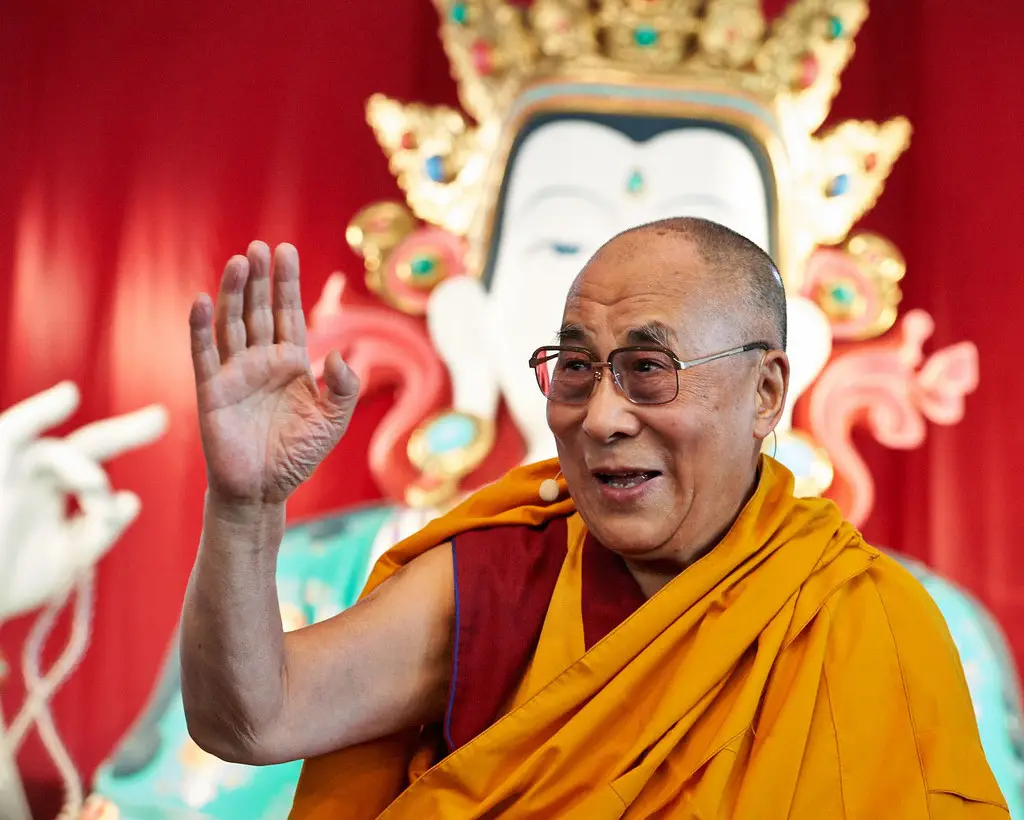The Dalai Lama’s rebirth story is rooted in Tibetan Buddhist tradition, specifically within the Gelug school, where the Dalai Lama is considered the earthly manifestation of Avalokiteshvara, the Bodhisattva of Compassion. The concept of rebirth in this context involves the belief that a Dalai Lama’s consciousness transfers to a new body after death, continuing the lineage to guide and serve humanity.
The process begins with the death of the current Dalai Lama. After the 14th Dalai Lama, Tenzin Gyatso, passes, senior lamas from the Gelug tradition, guided by the Nechung Oracle and other spiritual signs, undertake the search for his reincarnation. This involves a combination of spiritual practices, omens, and rituals. For example, visions seen in the sacred lake Lhamo Lhatso, dreams, or unusual behavior in a young child may indicate the reincarnation. The search often focuses on young children born around the time of the previous Dalai Lama’s death, typically in Tibetan regions or the broader Himalayan area.
Once potential candidates are identified, tests are conducted. These may include presenting the child with objects belonging to the previous Dalai Lama, such as prayer beads or ritual items, mixed with similar but unfamiliar items. If the child consistently chooses the correct objects, it’s seen as a sign of recognition from their past life. Other signs, like the child recalling details of the previous Dalai Lama’s life or displaying unusual wisdom, are also considered.
The 14th Dalai Lama, Tenzin Gyatso, was identified in 1937 at age two in a remote village in Amdo, Tibet. Monks followed signs, including the direction of the previous Dalai Lama’s head after death and visions in Lhamo Lhatso. The child, Lhamo Dhondup, recognized items belonging to the 13th Dalai Lama and displayed remarkable composure, leading to his confirmation. He was enthroned in 1940 after training under senior lamas.
Historically, the process has varied. The 1st Dalai Lama, Gendun Drup (1391–1474), was retroactively identified as the first in the lineage, with the title formalized by the 3rd Dalai Lama, Sonam Gyatso (1543–1588). Each Dalai Lama’s identification has relied on a mix of spiritual guidance and tradition, though political influences, especially from the Chinese government in recent centuries, have sometimes complicated the process.
The 14th Dalai Lama has stated he may be the last, suggesting the tradition could end if Tibet’s spiritual and cultural needs change. He’s also indicated his reincarnation might be found outside Tibet, possibly in a democratic process, or that he might name a successor before his death to counter potential Chinese interference. China, however, claims authority over the selection, creating tension over the future 15th Dalai Lama.
This system reflects Tibetan Buddhism’s belief in tulku—reincarnated enlightened beings who return voluntarily to help others achieve enlightenment. The Dalai Lama’s rebirth story is thus both a spiritual and cultural institution, blending mysticism, tradition, and, increasingly, geopolitical challenges.

